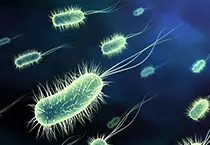Protein Purification Service Company(Part ①)

Medicilon has more than 10 years of experience in recombinant protein expression and purification services. Medicilon has a variety of protein expression synergies, including prokaryotic protein expression system, yeast protein expression system, insect cell protein expression system (rod-shaped Virus) Mammalian cell protein expression system, with a variety of fusion technologies, can provide you with a variety of options in protein expression and purification. From scheme design, gene optimization, expression condition optimization to purification technology system, to improve your target protein expression level.
Medicilon protein expression system: prokaryotic protein expression system (Escherichia coli expression system), yeast protein expression system, insect cell protein expression system (baculovirus expression), mammalian cell protein expression system, Medicilon provides a variety of The recombinant protein system is for your choice, and you can choose flexibly from price, cycle, advantages and disadvantages to meet your different scientific research needs.
Protein expression and purification services include codon optimization, gene synthesis, expression vector construction, small-scale protein expression and purification, and large-scale protein expression and purification. A large number of purified recombinant proteins can be used in a series of biomedical research in drug screening, structural biology research, cell biology research, proteomics, etc. The prokaryotic protein expression system is by far the most mature and reliable protein expression system, which can quickly express and purify proteins from various sources. Medicilon has successfully constructed a complete E. coli prokaryotic and yeast cell eukaryotic protein expression technology platform, and can provide a complete set of services from protein expression plasmid construction, protein expression condition exploration and protein purification according to customer needs. .
Principles of protein purification
First, we must understand the properties of the target protein and main impurities in the sample to be purified, collect as much as possible about the source, nature (molecular size, isoelectric point) and stability (protein to temperature, extreme pH, protease, oxygen and metal) of the relevant protein Tolerance of ions, etc.), which helps design protein purification.
Secondly, before the purification begins, the use of the final product must be understood to design the protein purification process, and the quality, quantity and economy of the purified product must be considered in three aspects. How high the purity of the purified protein is, how much activity is allowed to be lost during the purification process, and how much time and cost the purification process takes are all affected by the use of the target protein. The higher the purity of the target protein, the longer the operation time and the higher the cost.
Finally, it is also important to fully understand the large amount of information of each separation and purification technology operation unit. For example, when the cell is broken, it is necessary to understand the flow rate, type of agitator, operating pressure, cell concentration and type, product release fragments and size, etc.; design analysis When adsorbing chromatography, understand the characteristics of the column, the performance of the gel or other adsorbents (binding capacity, dissociation constant, flow rate, etc.).
The selection and determination of protein purification methods should be determined according to the nature of different protein samples and the specific research purpose. Commonly used methods for initial extraction and concentration of proteins are adsorption method, ultrafiltration method, precipitation method (such as salting out, organic solvent precipitation, isoelectric point precipitation and selective precipitation, etc.), dialysis method, etc. When high resolution is required, chromatography (such as gel filtration, ion exchange, affinity chromatography, and covalent chromatography) and electrophoresis (such as isoelectric focusing, two-dimensional electrophoresis, capillary electrophoresis, and immunoelectrophoresis, etc.) are usually used. . The principle of these separation and purification methods is mainly based on the differences in solubility, chargeability, molecular weight or affinity specificity of proteins. The research and application of chromatographic technology and electrophoresis technology in protein purification are extensive and in-depth.
Introduction of common protein purification techniques
At present, ion exchange chromatography has become the most commonly used method in protein separation and purification. Statistics show that in protein purification schemes, ion exchange chromatography accounts for 75%, followed by affinity chromatography and gel filtration chromatography, respectively 60% and 50%. In fact, the protein purification process is often achieved by using several purification technologies in combination. In this process, it is important to choose a reasonable purification technology. However, how to use these technologies in a reasonable combination and order is also a successful separation. Must be considered.
- Gel filtration chromatography
Gel filtration chromatography technology is an efficient separation and purification method in the field of protein research. On the one hand, in theory, the protein sample almost does not have any effect on the stationary phase matrix in the gel column. On the other hand, the sample eluent is a salt or pure aqueous buffer, and the eluent is The composition does not change, so this technology has many advantages in terms of easy operation, gentle elution conditions, good reproducibility, no need for organic solvents, easy sample denaturation and high recovery rate.
Main applications: for protein concentration and purification, molecular weight and distribution range determination, sample desalting and protein buffer replacement.
Main considerations: gel parameters, volume parameters, partition coefficient and effective partition coefficient.
